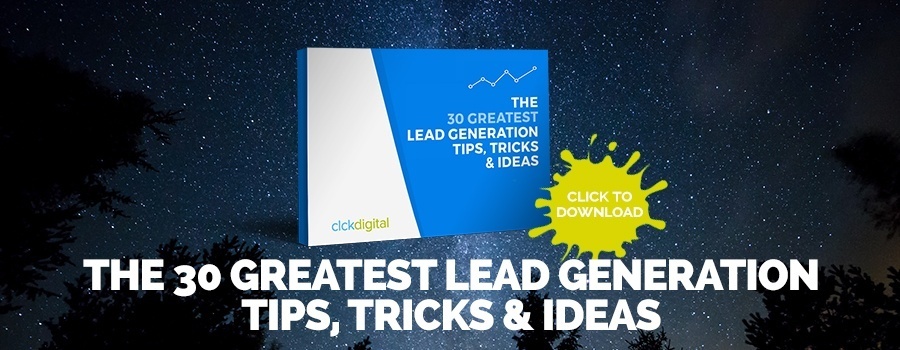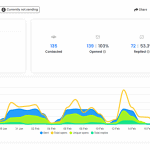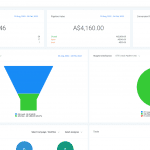 You’ve probably heard marketers talk about “friction” as a being bad thing – something to be avoided.
You’ve probably heard marketers talk about “friction” as a being bad thing – something to be avoided.
But what do we mean by “friction” in an online campaign? It’s a convenient term to denote all the little irritants and obstacles that interrupt the smooth passage of your readers’ attention from the offer you are making to the call to action (CTA) you want them to follow.
Elements of friction include anything that:
- Diminishes the reader’s trust
- Detains the reader without increasing his reward, or enhancing your relationship with him/her.
- Obscures the proposition you are making to the reader
Any one of these may be trivial. But together they impede the flow of the reader’s attention, and increase the chance that you will have lost it before the CTA is reached.
So let’s have a look at these elements in greater detail.
1. Diminishing the Reader’s Trust
One of the primary purposes of your online marketing content is to establish a relationship of trust between you and readers who have a genuine need for the product or service you provide. A reader who trusts you will eventually buy from you, rather than from the other businesses that may be clamouring for attention.
A good starting assumption is that your reader doesn’t trust you, and that you have to earn that trust. Once trust is established, it can be easily lost. Usually, trust is not lost all at once, but by a process of erosion – little things that nag at the reader’s subconscious and diminish their faith in what you’re saying to them, ultimately reducing the likelihood that they will buy from you.
Here are few ways to lose that trust (and what you can do to avoid them!)
“Selling” – instead of establishing your authority
One quick way to lose your reader’s trust is to lard your content with “persuasion” language, at the expense of simply telling – as clearly and simply as you can – the story of the benefits you can bring them.
Respect your readers’ intelligence. They already know you think you’re the best, just as they know that you want them to believe that you’re the best. Instead of predictable assertions about how good you are, give them information about your business which is likely to be new, and useful, to them, and which establishes you as a leader in your field.
Using “management-speak”
You know – that infuriating vocabulary of buzz-words that is so often a substitute for real thought. People get wise to this language, and the dog-whistle no longer works – indeed, it’s counterproductive, suggesting that you’re not confident enough of the value of your offer to express it in plain language. Before you tell your readers that your business provides “cutting edge solutions to rain water ingress”, pause to think if it might not be better to tell them that your service stops leaks!
Not being congruent
Being congruent means that what you say to your reader at one stage of their path towards doing business with you matches what they will see and experience if they follow your CTA to the next stage. If they click an invitation to see a product demo, it’s important that the next screen they see should be very clearly giving them – a product demo.
If the button you’re asking them to click says something else, you just put a little speed-bump in your reader’s path. Headlines, in particular, must agree with the copy they introduce. Even if the body of the landing page is congruent with the invitation, having headlines that don’t agree with the preceding invitation will tend to erode your reader’s trust and risk losing you the lead, before they ever get round to reading and appreciating your lovely content! Congruence goes beyond the text, too – giving successive stages in a click path a similar look is an important reinforcement.
Here’s an example of good congruence:

Letting People Worry About Your Security
People are naturally wary of entrusting strangers with personal data, even if it’s just an email address. However they recognise the logos of certain privacy management services providers. When designing forms, bear in mind that you are soliciting private information. It’s a good idea to:
- Display security seals such as on the same screen as a form in which private details are to be entered
- Display a reference to your privacy policy
These steps tend to increase trust, and therefore the likelihood of the form being completed, the lead captured, and being successfully converted.

2. Detaining the reader for no good reason
You are competing, always, for your readers’ attention. You will succeed only to the extent that you continue to reward your readers for that attention.
Not being concise
Content which says in 100 words what could be said in 60 is inherently unrewarding, and risks losing you the lead. Less is more, in marketing content. Be ruthless with your copy, and don’t leave an ounce of fat.
Letting your reader get distracted
The navigation in a web document is a constant temptation to the reader to move on. Often this is desirable, but in a document containing an offer with a CTA, it’s just an invitation to click past and deny you the lead. Remove it.
Making your reader complete a long, badly-designed form
Forms are the sharp end of lead capture. Unless and until your reader fills one in and submits it, you have not created a business opportunity. At the same time, people have all sorts of conscious and unconscious resistance to filling in forms. It makes sense, therefore, to design your forms to look as simple and quick to complete as possible. Keep the number of fields, especially mandatory ones, to a minimum.
Making them “Submit”
At the end of your form comes the crucial click – the button that will create your lead. By default these are usually entitled “Submit”. “Submit” is an off-putting word – one that raises subconscious resistance. While it’s undeniable that your reader is “submitting” their data to you, they are doing to so as a way of gaining the benefits of the offer you have made them. And they emphatically do not want to submit themselves to you. Rather than accept the default “Submit”, replace it with a brief restatement of the benefit that clicking will bring them, for instance “Download my free E-book” or “Join Free Webinar”. Anything but “Submit”!
[vc_row][vc_column width=’1/2′] [/vc_column][vc_column width=’1/2′]
[/vc_column][vc_column width=’1/2′] [/vc_column][/vc_row]
[/vc_column][/vc_row]
3. Obscuring the Proposition
Online marketing material should focus on a very limited message, and be designed in such a way as to tell the reader – AT A GLANCE – that your page is worth their attention. Don’t allow your own enthusiasm for your business to seduce you into cluttering the page with extraneous material that crowds out the message you want to convey. Use design – especially colours – to draw attention to your message and, crucially, to your CTA.
Bad CTA

Good CTA

Bottom Line
Landing pages are a crucial element to your inbound marketing efforts. Get them right and they can bring in a steady flow of new leads. What business doesn’t want that!
- How Videos Can Be Used in Email Marketing for More Engagement - April 4, 2022
- Attention Home Builders: Here’s How to Educate, Engage and Win Over Potential Customers - October 19, 2020
- The Best Digital Marketing Framework for High Ticket Businesses - September 14, 2020




